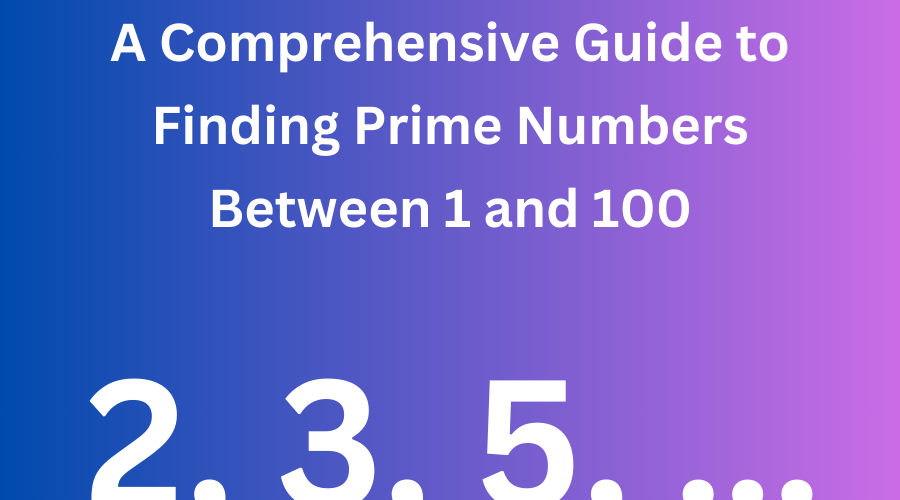Introduction
Prime numbers are a fundamental concept in mathematics, crucial for various applications, from cryptography to number theory. Understanding how to identify these numbers can enhance your mathematical skills and deepen your appreciation for the intricacies of arithmetic. In this article, we will delve into the methods for finding prime numbers between 1 and 100. By the end, you’ll be well-equipped to identify these prime numbers with ease.
What Are Prime Numbers?
Before we dive into the process of finding prime numbers between 1 and 100, let’s briefly define what prime numbers are. A prime number is a natural number greater than 1 that has no positive divisors other than 1 and itself. In other words, a prime number is only divisible by 1 and the number itself. For example, the number 7 is a prime because its only divisors are 1 and 7.
Why Are Prime Numbers Important?
Prime numbers play a crucial role in various fields, including cryptography, computer science, and pure mathematics. They are the building blocks of whole numbers, and their unique properties make them invaluable for encryption algorithms, which are essential for secure online communications. Understanding prime numbers is not just an academic exercise; it has practical implications in the real world.
The Sieve of Eratosthenes
One of the most efficient methods for finding prime numbers between 1 and 100 is the Sieve of Eratosthenes. This ancient algorithm, developed by the Greek mathematician Eratosthenes, systematically eliminates the non-prime numbers from a list, leaving only the primes.
Here’s how the Sieve of Eratosthenes works:
- Create a List: Write down all numbers from 1 to 100.
- Identify the Smallest Number: Start with the smallest number in the list (greater than 1), which is 2. Circle it because it is a prime number.
- Eliminate Multiples: Cross out all multiples of 2 (4, 6, 8, etc.) because they are not prime.
- Move to the Next Number: Find the next number in the list that is not crossed out and circle it (3). Cross out all its multiples (6, 9, 12, etc.).
- Repeat: Continue this process with the next uncrossed number (5), and so on, until you have processed all numbers up to 100.
By following these steps, you’ll have a list of prime numbers between 1 and 100: 2, 3, 5, 7, 11, 13, 17, 19, 23, 29, 31, 37, 41, 43, 47, 53, 59, 61, 67, 71, 73, 79, 83, 89, and 97.
To understand it better you may click here to watch a video tutorial.
Checking Primes Manually
While the Sieve of Eratosthenes is effective, you can also manually check if a number is prime by testing its divisibility. To determine if a number is a prime, divide it by all prime numbers less than or equal to its square root. If none of these divisions results in a whole number, then the number is prime.
For instance, to check if 29 is a prime number:
- Calculate the square root of 29, which is approximately 5.39.
- Check for divisibility by all prime numbers less than or equal to 5 (i.e., 2, 3, and 5).
- Since 29 is not divisible by 2, 3, or 5, it is a prime number.
Prime Numbers and Their Patterns
Finding prime numbers between 1 and 100 reveals some interesting patterns. For example, except for 2, all prime numbers are odd. This is because any even number greater than 2 can be divided by 2, disqualifying it from being prime. Additionally, prime numbers tend to become less frequent as numbers get larger, a trend that continues well beyond 100.
Conclusion
Understanding and finding prime numbers between 1 and 100 is a valuable skill in mathematics. Whether you use the Sieve of Eratosthenes or manually test for primality, the ability to identify these numbers can have significant applications in both theoretical and practical fields. By mastering the methods outlined in this article, you’ll not only enhance your mathematical proficiency but also appreciate the beauty and complexity of prime numbers. So, the next time you’re faced with the challenge of finding prime numbers between 1 and 100, you’ll be well-prepared to tackle it with confidence.
